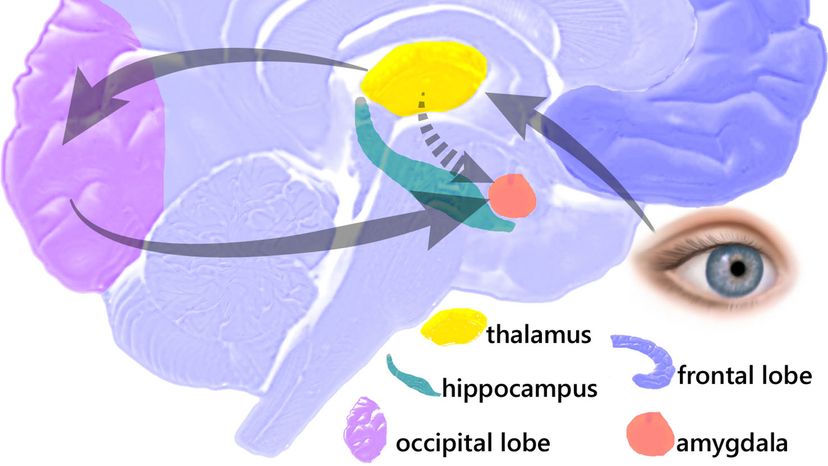Back to SM. On the surface, her fearlessness seems kind of funny — charming even. Her kids even got a kick out of it. "Me and my brothers... see this snake on the road," her eldest son once wrote. "I was like, 'Holy cow, that's a big snake!' Well mom just ran over there and picked it up and brought it out of the street, put it in the grass and let it go on its way.... She would always tell me how she was scared of snakes and stuff like that, but then all of a sudden she's fearless of them. I thought that was kind of weird."
But while navigating life without anxiety may seem somewhat exciting — and SM made it clear a person could survive perfectly well without an intact amygdala — the absence of natural fear can be dangerous, even potentially fatal. A complete lack of suspicion or distrust meant SM was vulnerable in every way. Once, while walking through a small park at 10 p.m., a man accosted SM and held a knife to her throat. According to researchers, "In the distance she could hear the church choir singing. She looked at the man and confidently replied, 'If you're going to kill me, you're gonna have to go through my God's angels first.' The man suddenly let her go." If that weren't bizarre enough, SM didn't flee the scene — she simply walked home. And, to make matters even more maddening, she walked past the same park the next day and showed no signs of fear or avoidance. She just didn't have it in her.
That wasn't the only time SM walked right into seriously risky situations and emerged unscathed and unbothered. Researchers say "she was once physically accosted by a woman twice her size, she was nearly killed in an act of domestic violence, and on more than one occasion she has been explicitly threatened with death. What stands out most is that, in many of these situations, SM's life was in danger, yet her behavior lacked any sense of desperation or urgency."
But while SM has been held up as the prime example of a fearless, amygdala-less life, more recent research has indicated that the connection between the two characteristics isn't so cut and dry. According to a study in "Nature Neuroscience," people with damaged amygdalas did still report feelings of intense fear, and some even felt more fear than those with normally functioning amygdalas. The study looked at participants with the same super rare genetic condition that caused SM's amygdala damage — Urbach-Wiethe disease (less than 300 people have been found to have it since it was discovered in 1929).
Researchers found that watching horror films did nothing to incite fear in participants with this disorder, but they were curious whether exposing them to carbon dioxide would induce a fear reaction. That's because the amygdala plays a big part in detecting CO2, and when it detects higher concentrations of it in the blood (a possible sign that suffocation is occuring) it can cause a person to feel panic. Contrary to what seemed logical, when participants with Urbach-Wiethe disease breathed in air that was 35 percent CO2, they freaked.
So, what's the deal? Researchers wrote, "results indicate that the amygdala is not required for fear and panic and make an important distinction between fear triggered by external threats from the environment versus fear triggered internally by CO2."
So can you live without the amygdala? Yes. Can you live safely and securely without it? Still unclear, but scientists are working to figure it out.



